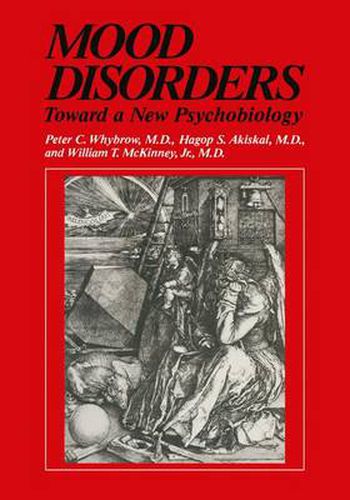Readings Newsletter
Become a Readings Member to make your shopping experience even easier.
Sign in or sign up for free!
You’re not far away from qualifying for FREE standard shipping within Australia
You’ve qualified for FREE standard shipping within Australia
The cart is loading…






This title is printed to order. This book may have been self-published. If so, we cannot guarantee the quality of the content. In the main most books will have gone through the editing process however some may not. We therefore suggest that you be aware of this before ordering this book. If in doubt check either the author or publisher’s details as we are unable to accept any returns unless they are faulty. Please contact us if you have any questions.
In this book we present a conceptually integrated approach to disorders of mood. These disorders are defined narrowly as the clinical syndromes of mania and melancholia. The latter is our particular focus, for the simple reason that it is more common and thus more is known about it. Our approach owes much to Adolf Meyer, who first used the term psychobiology. It was he who emphasized in a practical way the importance of the clinician consider ing the joint contribution of psychosocial and biological factors in the genesis of mental disorders. However, until the 1960s, our relative ignorance of basic mechanisms that link brain and behavior prevented the development of a genuine psychobiological perspective. Thus Meyer’s work was concerned largely with teaching the importance of the personal biography and a consideration of social history in the development of mental disorder. We feel that sufficiently rigorous data have now emerged in psychia try to permit tentative but real psychobiological integration. Affective illness is proba bly the most promising area for an attempt at such a synthesis. It is our belief that the theory and clinical practice of psychiatry now can be woven into a coherent theme, integrating insights and evidence generated by the psychodynamic, biological, and behavioral methods; hence in part we review the emerging psychobiology of mood disorders with the hope that it can serve as a generic paradigm for other psychiatric syndromes.
$9.00 standard shipping within Australia
FREE standard shipping within Australia for orders over $100.00
Express & International shipping calculated at checkout
This title is printed to order. This book may have been self-published. If so, we cannot guarantee the quality of the content. In the main most books will have gone through the editing process however some may not. We therefore suggest that you be aware of this before ordering this book. If in doubt check either the author or publisher’s details as we are unable to accept any returns unless they are faulty. Please contact us if you have any questions.
In this book we present a conceptually integrated approach to disorders of mood. These disorders are defined narrowly as the clinical syndromes of mania and melancholia. The latter is our particular focus, for the simple reason that it is more common and thus more is known about it. Our approach owes much to Adolf Meyer, who first used the term psychobiology. It was he who emphasized in a practical way the importance of the clinician consider ing the joint contribution of psychosocial and biological factors in the genesis of mental disorders. However, until the 1960s, our relative ignorance of basic mechanisms that link brain and behavior prevented the development of a genuine psychobiological perspective. Thus Meyer’s work was concerned largely with teaching the importance of the personal biography and a consideration of social history in the development of mental disorder. We feel that sufficiently rigorous data have now emerged in psychia try to permit tentative but real psychobiological integration. Affective illness is proba bly the most promising area for an attempt at such a synthesis. It is our belief that the theory and clinical practice of psychiatry now can be woven into a coherent theme, integrating insights and evidence generated by the psychodynamic, biological, and behavioral methods; hence in part we review the emerging psychobiology of mood disorders with the hope that it can serve as a generic paradigm for other psychiatric syndromes.